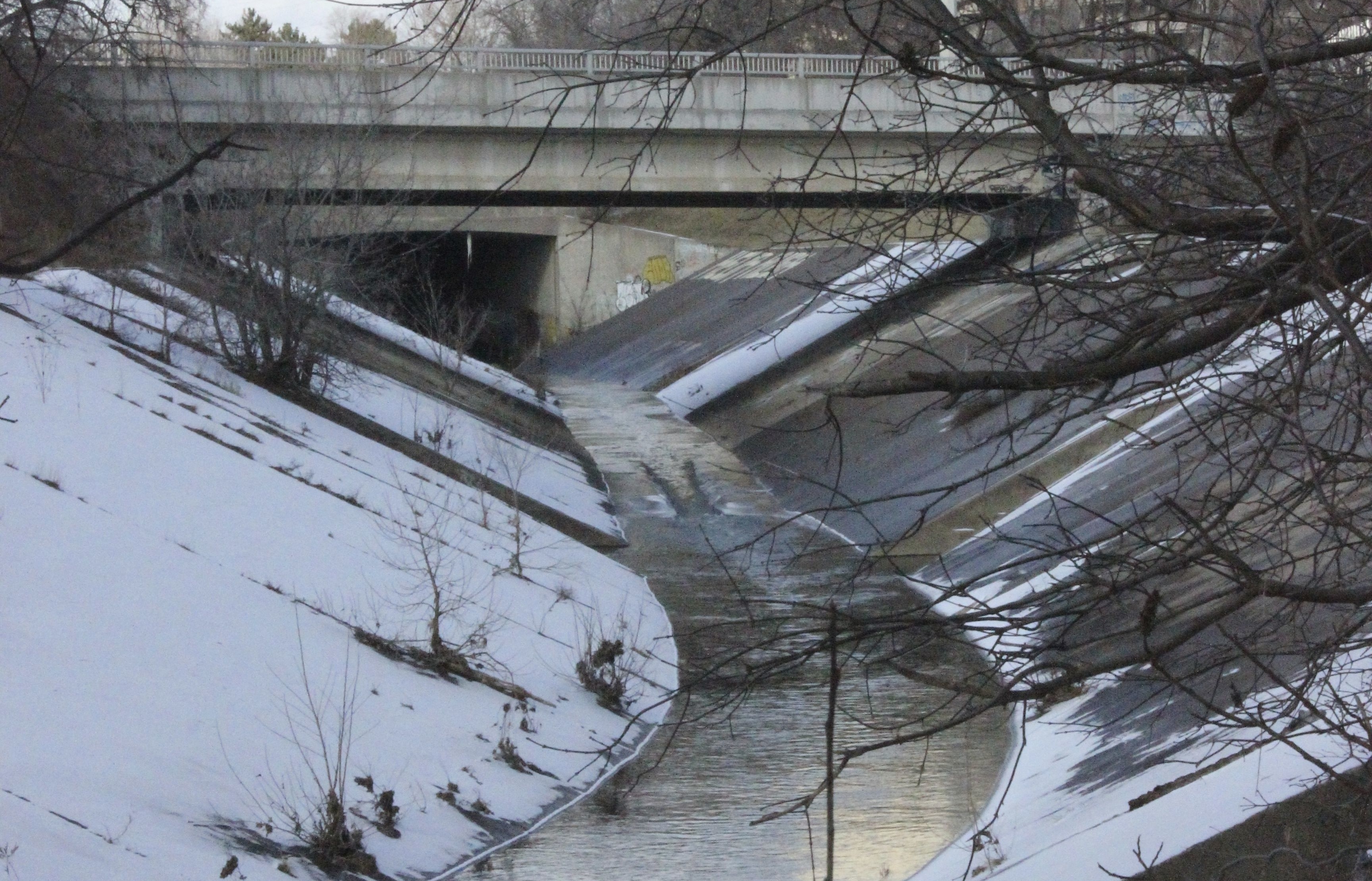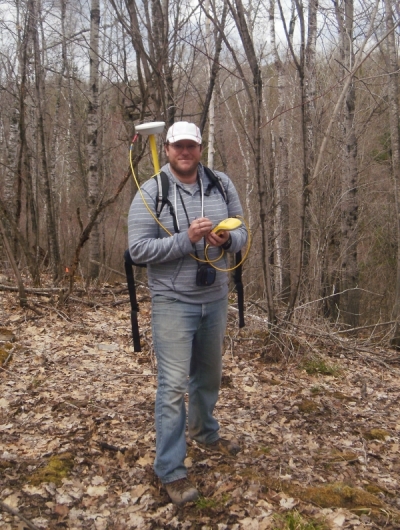One of the most urbanized watersheds in Canada is becoming an ideal spot for researchers and industry to develop technologies geared towards improving water quality and flood prevention thanks to the Southern Ontario Water Consortium’s (SOWC) monitoring infrastructure and a University of Toronto (U of T) professor’s research.
The watershed monitoring infrastructure set up at Mimico Creek, which runs from Brampton to Mississauga to Toronto, provides unique access to a highly-urbanized watershed as well as comprehensive real-time data, which can be used to study the effectiveness of various water technologies.
“Gaining access to a highly-urban watershed like Mimico to test technologies is not easy,” says U of T professor Carl Mitchell, the lead researcher of the SOWC subwatershed. “A lot of the creek is on private land or park land. There are also very few places where you can retrieve such a vast amount of data from a watershed in real time. We are providing a bridge for industry to access the watershed and use the infrastructure that is already in place.”
This type of opportunity is particularly important right now as Canada becomes increasingly urbanized, adds Mitchell.
“Most watersheds start up in pristine areas, but Mimico Creek starts out at a storm sewer in Brampton,” he says. “It’s a natural creek, but the land use is quite different than other watersheds because it is so heavily urbanized.”
Mimico Creek is one of three subwatersheds under SOWC’s Watershed Node. The node, which is led by the University of Waterloo, enables the investigation of watershed-scale hydrologic processes with specific focus on the influence of urbanization and associated land use management in watersheds under various degrees of urban development.
The infrastructure within the node provides SOWC users with an integration of climatic, surface and subsurface monitoring networks consisting of conventional and emerging sensor arrays interconnected through wireless telemetry. The node consists of three instrumented subwatersheds including Mimico Creek, which is highly urban, Alder Creek, which is becoming urbanized and Hopewell Creek, which is a rural watershed.
“The three watersheds work on a gradient from rural to urbanizing to highly urban,” says Mitchell. “The infrastructure set up at Mimico Creek is the same as the infrastructure set up at the other watersheds, which is good for comparisons. By having this gradient, we can look at the impacts of urban development on the watershed and find ways to reduce any harmful effects when it comes to future development.”
“We have the ability to monitor water flow and levels for flooding as well as water quality parameters including temperature, turbidity, salinity, pH, oxidation reduction potential and dissolved oxygen.”
This information is gathered by equipment positioned at five different spots along the river. There are sheds nearby each site containing a data logger and cellular modem, where all the information is recorded every 15 minutes and uploaded to the SOWC data structure and the web in real time. There is also automatic water sampling equipment in the sheds that can be programmed to take samples of the water at various time or flow intervals.
Advanced analytical equipment is also available through the SOWC’s Watershed Node that provides the ability for analysis, research and development of techniques for the identification of novel contaminants.
There is also infrastructure in place for the investigation of bedrock aquifer systems and groundwater remediation technologies. There are six deep ground water wells positioned throughout Mimico Creek that collect water from 20 to 150 feet below ground and monitor groundwater level and salinity.
“Having these wells helps us understand how the ground water interacts with the surface water in the watershed,” says Mitchell.
Finally, there are a number of meteorological instruments set up within the watershed. One piece of equipment is installed in the north end of Mimico Creek and is hooked up to the cellular network and the rest are mobile and can be placed where needed. With this equipment, users can measure temperature, humidity, incoming and total solar radiation, ground heat fluxes, wind speed, wind direction, soil temperature and rain fall.
With all this cutting-edge equipment, Mitchell, who has expertise in hydrology and water quality in watersheds, is currently investigating the connection between water flow and water quality by using isotope methods to study how long it takes the water to move through the watershed.
“We are following isotope tracers, which occur naturally in the water,” he says. “Understanding how long water takes to travel through the watershed is important because we think the speed at which water flows through a watershed has a close connection to water quality. For example if water moves quickly through a watershed, then it has less opportunity to interact with the subsurface. Having water running over ground, which is a fast process, means that any pollutants picked up from the surface do not have the opportunity to be filtered through the soils.”
Mitchell, along with his research team, are specifically examining water flow and organic pollutants including pesticides, PAHs and fluorinated compounds as well as heavy metals including mercury, lead and cadmium.
Mitchell’s research, which is geared towards an improved understanding of the mechanics of the watershed, will provide a more detailed picture for water technology industries looking to reap the benefits of the infrastructure SOWC has put in place at Mimico Creek.
“Once we have a better understanding of how water flow impacts water quality, the next step is to think about how we can help guide future development to ensure the watershed maintains a high quality of water.”
There are plenty of technologies currently being developed that are aimed at reducing flooding and improving water quality, from porous pavement to green roofs to trench and water treatment systems surrounding parking lots.
“The infrastructure at Mimico can be used to test and demonstrate how and by how much these innovative water technologies can help mitigate the impacts of urban development on watersheds,” says Mitchell.
Mimico Creek is also a perfect testing ground for water technology companies focused on developing ways to reduce the two biggest pollutants in creeks – sediment and salt, adds Mitchell.
Sediment caused from waste going down the sewers or rain washing dirt into the watershed can cause problems because it not only dirties the water but the particles also help transport heavy metals into the creek. Salt is another serious watershed pollutant that is becoming increasingly problematic because of the amount of salt we are putting on our roadways, which then gets washed away into the watershed.
“All of this can be harmful to the fish and other aquatic life living in the watershed,” says Mitchell. “Also pollution within our watershed impacts the water quality of our lakes that we draw from because the rivers draining watersheds eventually flow into them.”
Companies developing technologies that can be installed in storm sewers and watersheds to lessen the amount of sediment and salt getting into the water would find Mimico Creek to be an optimal environment for testing and demonstration, he adds.
In addition to the water entering the watershed from sewers, Mimico Creek is also an effective testing ground for technologies related to improving the water quality of effluent flowing from manufacturers into the watershed.
Having the infrastructure in place to do the testing and demonstration of water technologies related to watersheds is a significant step in moving these innovations to market so they can be used by municipalities and manufacturers, says Mitchell.
“One of the biggest barriers to investing in water technologies is not knowing if the technology works because the data isn’t available,” says Mitchell. “Mimico Creek provides that data. Industry can bring their technologies here and test them and we will have the data showing the impact the technology is having on the watershed. Ultimately, the SOWC infrastructure can help test and measure the effectiveness of any technology related to the watershed and move these technologies forward.”



